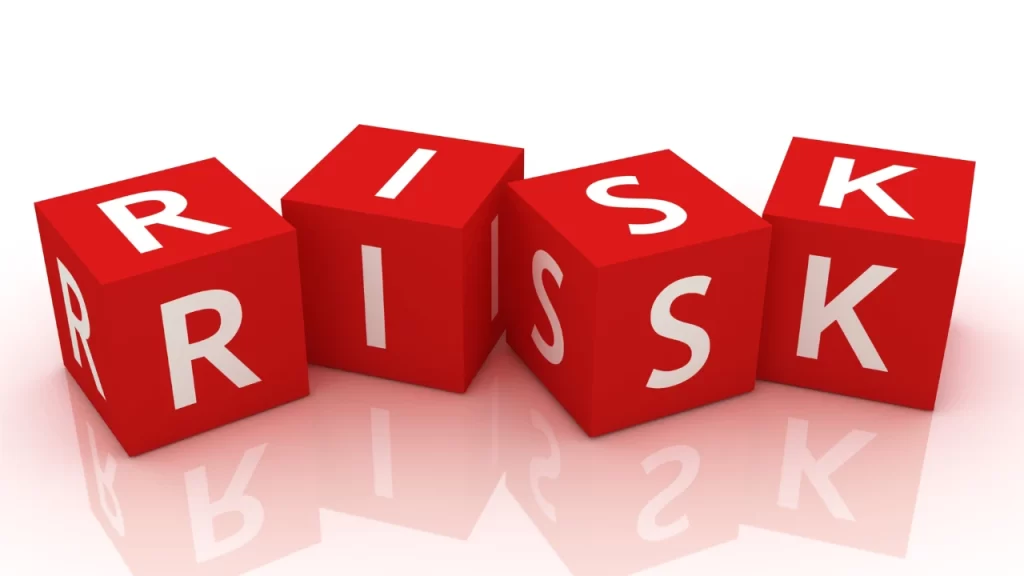The glamour of the stock market, with its potential for substantial returns, often conceals the inherent risks that lurks beneath the surface. To be a successful trader one must prioritize and master risk management. This is not only a defensive tactic but of strategic importance for any trader. Understanding and actively following it is one of the key principles for successful and profitable trading results.
Table of Contents
What is Risk Management?
In trading, risk management includes objectively identifying, assessing, and mitigating potential losses that could arise from open trade. Open trades are trades which a trader currently holds as an active investment that can fluctuate in value. Risk management is the art of striking a balance between the amount of money a trader can lose in a trade (or a set of trades) vis-a-vis the amount of money he expects to make. Risk management involves understanding the distinct types of risk present in the market and actively developing strategies to minimize them. The goal of risk management is to protect your trading capital from steep drawdowns, while pursuing profitable trading opportunities.

Objective of Risk Management
Given the uncertain environment of trading, a trader understands and focuses more on risk management (controlling risk), rather than purely chasing profits.
Some of the primary goals of risk management are:
- Capital Preservation: For any successful trader, the primary goal is to preserve his trading capital from big losses, while pursuing profitable opportunities. This aspect is often not considered by many aspiring traders, which can bring their trading career to an abrupt end.
- Limiting Losses: While the success of experienced traders is often apparent, it is crucial to acknowledge that they incur losses too. However, their disciplined approach to risk management ensures that these losses are minor compared to the outcomes of profitable trades. This underscores the acceptance of small losses as an inherent aspect of effective trading.
- Profit Maximization: This involves strategically increasing gains from successful trades while minimizing losses from unsuccessful ones with the goal of netting highest possible profit over a period of time .
- Emotional Discipline: A defined risk management plan minimizes the impact of emotional decisions driven by fear, greed, or hope.
- Maintaining consistency: Developing a defined and a consistent risk management strategy brings consistency to your trading results as well .

Types of Risk Management
Traders use distinct types of risk management techniques to minimize and protect their capital from potential losses.
A few key strategies used by traders are: –
- Stop Loss orders: – These are pre-set orders to automatically close a trade if it goes against the direction anticipated by a trader. The loss is pre-defined and usually the trader is comfortable taking this planned loss if the trade does not work in his favor.
- Position Sizing: It is a risk management technique used by a trader to size each of his trades based on his risk tolerance and account size. In other words, a position sizing technique tells you how many shares can you buy keeping in mind your account size.
- Diversification: This is the process of spreading risks across different asset classes (like stocks, bonds, commodities etc.) or individual stocks to reduce the overall impact of any single investment’s poor performance.
- Hedging: Hedge is like buying insurance. When you buy insurance, you pay a small premium to protect you against any unforeseen eventualities. In trading, a hedge plays a similar role. This is a slightly advanced strategy used to mitigate risk in existing open trades. Future and Options (F&O) instruments are used to hedge. For example, a trader may be bullish in a stock and may go long on 1000 shares . To mitigate the risk of the price moving against his positions, he may use F&O instruments to hedge. We will discuss hedging in our later blogs.
- Trailing Stop Loss Orders: This is the same as a stop loss order, but it adjusts automatically as the price of the security moves in the direction a trader has anticipated. The goal of using a trailing stop loss order is to keep reducing the open risk in a trade while locking in profits.

Planning your Trades
For an active trader, planning trades is paramount for consistent trading results. Planning trades changes your perspective on trading completely . Without having a clearly defined trading plan you are susceptible to taking impulsive decisions driven by emotions, fear and greed being the most common one.
A well-defined trading plan with crucial factors like entry and exit points, position size, stop loss levels, trailing stop loss etc., helps you remain objective by eliminating emotional biases that clouds judgement during live trading.

Similarly, a well-defined trading plan allows you to define your trading goals, risk tolerance levels and the strategies you would deploy to reach your trading goals. This ensures that your actions in the market aligns with your overall financial objectives. It also helps you review your performance, helping you identify what works best for you and what does not, thus helping you become a better trader.
Planning your trades acts as a roadmap, guiding you through uncertainty and increasing your probability to achieve success while minimizing risks.
It also fosters discipline in a trader which separates successful traders from others.
Position Sizing -The 1 % Rule
As a rule of thumb, in trading a trader should never risk more than 1 % of their trading capital on a single trade. So if you have Rs 1,00,000 in your trading account, your risk on any single trade should not be more than 1% which Rs1,000 in this case.

This is because despite the confidence which you may have in your strategy and experience, you could end up taking a series of losses .This is true as sometimes certain strategies work in certain market conditions and do not in others. In such a case, your aggregate losses should not overwhelm you, yet at the same time give you a clear signal to review and potentially adjust your strategy or risk parameters.
Traders who are trading with large capital may even go with less than 1% on a single trade.
How crucial is risk management for active traders?
For active traders nothing is more important than risk management. Active trading involves frequent buying and selling of securities, with the goal of booking profits from short-term fluctuations in price.
Due to this, active traders face amplified risk from market volatility and rapid price swings. Therefore, it is paramount for active traders to prioritize risk management in their trading plan.
Risk management techniques like setting stop loss orders in the system, position sizing, trailing stop loss orders and not taking trades in unfavorable market conditions is fundamental to a trader’s enduring success in the stock markets. Failure to preserve capital through such measures will inevitably lead to the end of trading activities.
Active traders need to be disciplined, stick to their trading plan and be emotionally strong to manage emotions which comes with price fluctuations.
Without robust risk management, the potential for frequent losses in active trading can quickly outweigh any gains.

